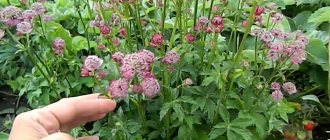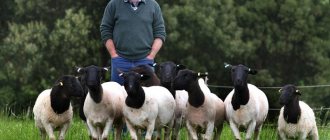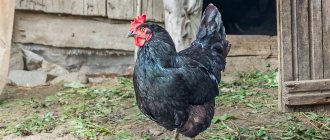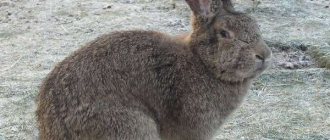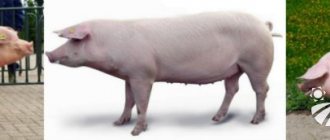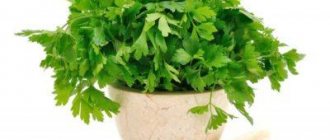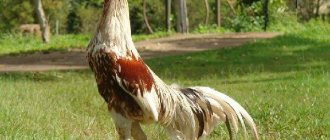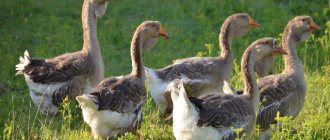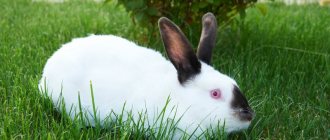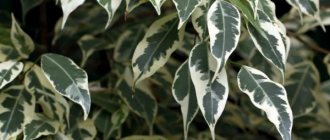Botanical name: Rough elm or mountain elm (Ulmus glabra), family Elm, species of the genus Elm.
Homeland of the rough elm: Northern Hemisphere, Europe, North America, Asia.
Lighting: light-loving.
Soil: fertile, moist.
Watering: moderate.
Maximum tree height: 40 m.
Average lifespan of a tree: up to 400 years.
Planting: seeds.
Description and photo of rough elm
PHOTO
Large deciduous tree with a round or semi-oval crown. Reaches up to 40 m in height. The trunk diameter is about 80 cm.
The bark is brown and fissured.
The leaves are wide, oblong, ovoid, 8-15 cm long, serrated along the edge, on short petioles, light green, yellow in autumn.
Female elm flowers are small, collected in bunches, and sit on short petioles.
Male anthers are purple. They bloom in March - April. The flowering period lasts from 4 to 7 days.
The fruits are lionfish, 2.5 cm in diameter. The rough elm bears fruit in May-June. The tree grows quickly. Prefers fertile, loose, moist soil. Does not tolerate salinity. Drought resistant. In severe frosts it is damaged. Used for landscaping parks, squares and gardens in group and single plantings. In Russia, it is distributed in the European part and the North Caucasus. Grows in deciduous and coniferous forests.
Planting and care
Any variety of elm grows well in loose, well-moistened soil. Despite the fact that elm is a shade-tolerant plant, it should be planted in a bright area. It does not tolerate soil salinity, so the gardener should first prepare a mixture for planting. To do this, you will need to mix sand, compost and manure in equal parts.
In order for the crop to begin to grow better, it is recommended to put lime in the planting hole. The area around the trunk is mulched with sawdust or peat. Within a week after planting, seedlings require abundant watering. On a hot day, it is worth pouring at least 30 liters under the plant. water.
During the growing season, fertilizing is regularly applied to the soil. Mineral complexes or organic matter are used as fertilizers. In spring and summer, they are brought into the tree trunk circle.
Pruning branches makes the tree attractive. The procedure is carried out 4 years after planting the elm on the site. Until this time, dry and broken branches are periodically removed from the young elm. It is also recommended to trim branches growing inside the crown.
Young seedlings are covered for the winter for 3 years, and after that the elm will be able to overwinter on its own.
Reproduction and cultivation of rough elm
Propagated by seeds. Planting takes place in the fall. Seeds are planted after full ripening. The seedlings tolerate transplantation well. To breed a certain variety of elm, the plant is grafted. Elm grows quite quickly, but is quite whimsical. Grows well in fertile, loose soil of moderate humidity, loves sunlight. Frost-resistant. Decorative individuals need pruning and crown shaping. The plant is resistant to air pollution and urban conditions.
Progress of the disease
The disease can enter the plant through any damaged area. The weather also contributes to the development of infection. High humidity and wind help transport fungal spores. If the fungus gets into the wood tissue, then the mycelium gradually spreads inside through the capillaries, capturing more and more areas of the wood. This most often happens slowly, but sooner or later the affected tissues die. Damaged vessels cannot transport nutrients and the tree begins to dry out.
Rough elm Pendula
Distributed in Europe and North America. It reaches a height of up to 40 m. The bark is brown, with cracks and peeling. The leaves are large, rough, dark green. The flowers are small, inconspicuous, collected in bunches. Blooms in May. The fruits are winged nuts and ripen after flowering. The plant is demanding. Prefers loose, fertile soil. Shade-tolerant, but grows better in sunny places.
It has a flat-topped weeping crown with long horizontal, spreading branches. Used in group and single plantings, for landscaping streets, parks, and gardens.
Description of Dutch disease
The disease is fungal in nature. The causative agent of elm disease is a fungus of the genus Ophiostoma. The fungus spreads along the conductive paths, as a result of which the vessels become clogged with a gummy mass that prevents cell nutrition. A blockage occurs, which leads to a complete cessation of sap flow in the affected area.
The original location of the fungus is considered to be Southeast Asia. It was introduced to Europe at the beginning of the 20th century (presumably by Chinese workers). Officetoma initially came to the Netherlands, where it caused great damage to elm stands. Holland suffered a great disaster, it is estimated that she lost about 70 percent of her elms at the beginning of the last century. This disease is still dangerous today.
There are acute and chronic forms of the disease. In acute cases, a sign of the disease is rapid curling of the foliage, which sometimes does not even have time to change color before drying out. In this case, the elm can die in one growing season (that is, in one summer). In rare cases, this can happen in a month or even a week.
Camperdownii rough elm
A small decorative tree, up to 5 m in height. The height of the plant depends on the height of the graft. The crown shape is broadly weeping, umbrella-shaped. Branches and leaves grow vertically downwards and slightly to the sides. The leaves are large, 15-20 cm in length, dark green, with a rough surface. The flowers are small, inconspicuous, purple.
Blooms before the leaves bloom. The fruits are lionfish. Elm Camperdownii prefers well-lit areas. Does not tolerate compacted plantings. Loves fresh, loose soil. It is frost-resistant, but in young plants it is recommended to cover the grafting site for the first 2-3 years. Used to create arches, tents, tunnels.
Looks impressive when planted alone. When the branches touch the ground, the branches are pruned to prevent them from rotting. It is not recommended to plant next to a pear and currant bush, as they have a common pest. They are damaged by insects such as elm springtail and elm leaf beetle, and are prone to fungal diseases and “Dutch” disease of elms.
Difficulties in growing
Rough elm is often affected by Dutch disease. This is a fungal vascular disease, the causative agents of which are elm sapwood. When affected, yellowing and wilting of the shoots is observed - symptoms develop within a month. Subsequently, not only the branches die, but the entire tree. An infected tree cannot be cured; it should be immediately uprooted and burned. To prevent the disease, organic fertilizers and biostimulants are added to the soil.
The elm is affected by a fungal disease.
Pests
The following pests affect elm:
- Greater elm sapwood is a bark beetle that spreads Dutch elm disease. It lives on the surface of wood, and the larvae go deep inside. If a tree is infected with Dutch disease, the spores of the fungus attach to the adults and travel with them to neighboring trees. A symptom of infection is the appearance of red sawdust on the bark in autumn or early spring.
- Gypsy moth caterpillars weaken the tree and cause leaves to fall. They can be found on elm trees from late May to early July.
- The Asian longhorned beetle is an insect that lives under the bark of elm trees. It prevents the full transport of water and nutrients, which is why the tree dies within 1-2 years.
Weeping elm
A small tree reaching 5 m in height. The branches are long and drooping. The leaves are wide, ovate, pointed, green. Brown-green in autumn. The flowers are small, inconspicuous, collected in bunches. The fruits are small lionfish. Ripen after flowering. The crown reaches up to 10 m in diameter. The annual growth is 10-15 cm in height and 20-30 cm in width. The tree is picky about soil, preferring a fertile, moist, slightly acidic substrate. The landing site is illuminated or semi-dark. Tolerates wintering and replanting well. The lifespan of a tree under good conditions is about 600 years. The peculiarity of the weeping elm lies in its peculiar growth with its roots upward.
The shape of the crown has an unusual tent shape, for which the tree is valued by landscape designers. Often found in ancient parks, it is used for decorative landscaping of garden plots, parks, alleys. Used in group and single plantings. The crown resembles an inverted bowl. Long branches with large leaves create a large, dense canopy under which you can hide from the summer heat, so it is advisable to place a gazebo or bench under it. Rough elm Weeping harmoniously combines with peonies, roses, currants, barberries and thuja. It looks most advantageous in the spring, when yellow-green lionfish appear.
Rough elm is a versatile, unpretentious tree that is suitable for gardens and plantings in public places. Adapted to urban conditions.
Reproduction
Reproduction of mountain elm occurs with the help of ripened seeds. The fruits of the tree are lionfish, which spread in large quantities over long distances. The wind picks up the winged nuts, helping them fly as far as possible.
Gardeners propagate the tree by grafting, from seeds, or by cuttings. For spring planting, cuttings are taken in February-March. At first they are kept in a cool room for 2-3 weeks, and then placed in water, cutting off the bottom layer.
To achieve the desired variety of rough elm, use a rootstock with its own root system. After the onset of May, an incision is made on the trunk into which the rootstock is inserted. The grafting site is fixed with insulating tape, and when the cutting grows together with the trunk, the tape is removed.
To beautifully decorate recreation areas near ponds or near benches, elm is grown in standard form. Seedlings aged from 3 to 5 years are planted in a permanent place in the garden. They must have a straight trunk and a developed root system.
Photo gallery
Meaning and Application
Young shoots of rough elm are used as branch feed for livestock. In addition, trees and shrubs play an important role in landscaping urban landscapes, towns, streets, parks and roads. Decorative species are most often planted near private houses and cottages to decorate the local area.
Wood bast (subbark) is of low quality, so it is used in the production of boxes. The bark, in turn, is released for dye production.
The wood of the rough plant has many positive properties. It is able to resist rotting in conditions of high humidity. Despite its hardness, the wood is perfectly processed.
Due to its unusual natural texture, it is used to make furniture and baseball bats. Increased wear resistance allows it to be used in the manufacture of floor coverings. In addition to the furniture industry, rough elm is used in carpentry and mechanical engineering.
Root pests
There are also pests that like to “feed” on elm roots (though not only them). These are aphids, copperheads and mites. For example, gall mites, which often provoke unusual growth on leaves. They cause damage mainly to the leaves and crown, but can also damage the roots. Damage to the root system leads to the fact that nutrients do not reach the trunk, branches and leaves in the required quantities. The result is sad, and when the first signs of tree disease are detected, measures should be taken to save green spaces.
Elm pest control measures
Insects that eat the leaves and bark of elm trees must be destroyed before they destroy the garden. Unfortunately, not everyone knows how to do this correctly. For example, a moth can simply be swept away with a broom. This procedure should be repeated several times during the day. However, the method will work provided that there are few individuals. In all other cases, it will be necessary to treat the crown, leaves, or water with a special solution (insecticide) that can destroy pests.
Diseased trees, if it is no longer possible to save them, have to be cut down, uprooted and burned. It is important to ensure that not a single “sick” branch remains on the ground. Otherwise, healthy plants will also become infected.
Contact our company for help! We have extensive experience and extensive knowledge in this field. We know exactly which drugs are safe for humans and how to properly treat trees.
Ella Sokolova, candidate of agricultural sciences. Photo by Ekaterina Mozolevskaya
Dutch disease (ophiostomosis, graphiosis) is caused by the fungus Ophiostoma ulmi. All types of elm species are affected, but smooth, rough and birch bark elms are the most susceptible; small-leaved elm is relatively resistant. This disease is extremely dangerous; it has threatened the existence of elm species in both forest and urban plantings.
Vascular damage
This disease is characterized by damage and death of water-conducting vessels of trunks and branches due to their blockage by mycelium, special cell outgrowths - tills, as well as the action of toxic substances secreted by the fungus - toxins. The affected vessels darken and become clearly visible on cross sections of trunks and branches, which is the main sign of the disease.
Blockage of blood vessels leads to the death of the crown. Depending on the speed of its drying out, chronic and acute forms of the disease are distinguished.
The elm family includes: elm, elm and elm (birch bark).
They get sick and dry out
The chronic form of the disease is more common, with trees becoming sick and drying out over several years. In sick trees, the foliage blooms later than in healthy ones, and falls earlier, the leaf blades are reduced, so the crown has an openwork appearance. The death of affected branches occurs after winter.
The first signs of the disease are branches with drying leaves
Drying begins from the top of the crown and spreads down. First, individual shoots dry out, taking the shape of a hook. Dried leaves acquire a red-brown color, curl along the midrib and hang in the form of flags. Such branches and shoots stand out sharply against the background of the green crown and serve as one of the common signs of the disease. The affected vessels on transverse sections of trunks and branches have the appearance of individual dark brown dots, half rings or intermittent rings.
In the acute form of the disease, trees dry out quickly, within one growing season or several weeks. Dried leaves turn brown, but often they retain a green, somewhat faded color. On cross sections of trunks and branches of withered trees, the affected vessels are visible in the form of a solid dark brown ring.
Routes of infection
Infection of trees is carried out by spores of the pathogen, as well as by mycelium upon contact of diseased and healthy roots, through shoots. Sporulation of the fungus forms in the spring under the remaining bark of withered trees and on sapwood, usually in the passages of sapwood beetles. Spores are spread by wind and rain, but the main carriers of the infection are certain types of sapwood beetles: destroyer (Scolytus scolytus), stream beetle (S. multistriatus), and less commonly, pygmy beetle (S. pygmaeus).
Young beetles flying out from withered, diseased trees undergo additional nutrition in the crowns of healthy trees, gnawing off the largest areas of bark in the forks of thin branches. At the same time, fungal spores located on the surface of the beetles easily penetrate through fresh lesions of the bark into the vessels. Warm, humid weather contributes to the massive formation of fungal spores and infection of trees. More active development of the disease and intensive drying out of affected trees occurs during dry periods.
Sources of infection are diseased, withered and withered trees, logging residues, affected stumps, bark, wood chips, and felled wood.
Dutch disease is widespread in natural stands, forest plantations, protective forest belts, and urban plantings. Trees of different ages are affected, but mainly 10–40 year old trees. In pure elm plantations, the level of disease is higher than in mixed ones, where the admixture of other species serves as a physical barrier to the spread of infection. Elm trees suffer more severely from the disease in conditions of high soil moisture.
Hornbeam elm is known for its medicinal properties and is widely used in medicine. The article discusses the general characteristics of this tree and cases of its use in traditional and. Readers are also presented with information about methods for preparing medicinal raw materials.
